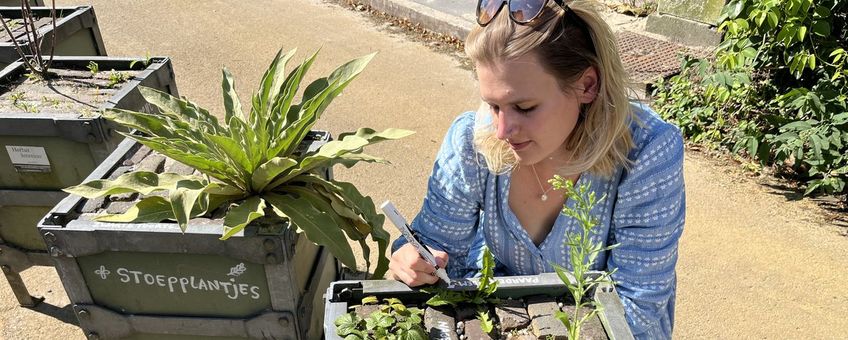
Citizen scientists and followers act due to a joint passion for pavement plants
Hortus botanicus LeidenThe aim of this research was to find out why some people are interested in citizen science on plants, despite the fact that they do not wish to collect data by themselves. In October 2021, the national ‘Stoepplantjesonderzoek’ (pavement plants study) survey was initiated, a citizen science project in which people could provide data of plants growing on or next to pavements. The Dutch urban flora is rich in species and a lot of biodiversity can be detected in cities.
After half a year, we asked participants of the ‘Stoepplantjesonderzoek’ survey to fill in a questionnaire about their motivation to participate and their attitude towards pavement plants. We received a total of 214 reactions, divided over people that actively collected data and people that more passively followed the survey through newsletters and social media content (@stoepplantjes).
Joint passion for nature
We discovered that both active data collectors, as well as followers, were mostly motivated by their joint passion for nature and willingness to support biodiversity. In addition, active data collectors were more motivated to support research and contribute to the generation of new knowledge. It was already known that volunteers, willing to help with data collection, do so in order to support science. Our study, however, revealed for the first time that active contributors and followers of citizen projects, despite a shared passion, employ very different activitities.
During outreach, we specifically posted information about different plant species, but less about the actual research itself. If desirable, increasing the content focusing on research might stimulate some of the followers to change into actual data contributors.

From a plant lover's perspective
Not surprisingly, both followers and actual data contributors of our ‘Stoepplantjesonderzoek’ survey had a positive view on pavement plants. Followers, however, considered pavement plants more beautiful and more important for urban biodiversity than actual data contributors did. This might be caused by a bias induced by the content in newsletters and social media that we shared. We posted many high-resolution photographs of tiny flowers. On an actual pavement, and without the use of a hand lens, plants with tiny flowers often look much less appealing, especially amidst cigarette butts or other litter. Despite their more positive view on pavements plants, followers did not change into actual data contributors during the duration of our survey.

Every citizen helps
Earlier research carried out by Wessel Ganzevoort (Tilburg University) showed that nature volunteers do many things, including data collection, education, nature conservation, or administrative tasks. Based on our own findings, we conclude that followers, though not actively collecting data, contribute to urban plant conservation as well. For instance, by organizing educational activities focusing on pavement plants to increase plant awareness. As a result of our ‘Stoepplantjesonderzoek’ survey, a local political party successfully lobbied against too rigorous weeding of pavements in the city of Leiden.
Every bit helps
Data collection is essential for citizen science projects, but other activities can contribute as well to meet the general aims of raising awareness on urban plants. Some like to contribute data, but others like to focus on activities, such as education or political lobbying. We urge for recognition and stimulation of such alternative activities next to data collection. If you recruit participants for more activities than just data collection, more societal needs, such as nature education and conservation, can be fulfilled.
The article, entitled '“What's that weed on the street?” Motivation and attitude of contributors and followers in a citizen science project studying pavement plants' is published in the scientific journal Biological Conservation. The research was conduced by PhD student Nienke Beets, together with researchers Anne Land-Zandstra and Tuomas Aivelo of the Leiden University research group Science Communication & Society, and prefect emeritus Paul Keβler of Hortus botanicus Leiden.
Text: Nienke Beets, Hortus botanicus Leiden; Science Communication & Society, Leiden University
Images: Maxime Boersma, Hortus botanicus Leiden; Ivon Vrolijk, Klimaatneutraal IJsselstein
